
Gulshan Mahal is the place to start your visit.
11 February
Mumbai
In late morning I taxied west to the National Museum of Indian Cinema
https://filmsdivision.org/nmic.html (open Tues.-Sun. 11 a.m.-6 p.m.), which
I happened to notice on Google maps. It had opened just a year ago, so it’s not
well known yet. The foreigners’ admission of Rp. 500 seemed excessive as it’s 25
times the Indian price, though the museum’s extensive and high quality exhibits
made a visit worthwhile. Staff directed me first to the historic Gulshan Mahal,
a restored 19th-century palace with exhibits about the history and people
involved with Indian cinema. I learned about all the big firsts—the first movie
shown in India in the late 19th century, the first Indian-made feature film, the
first actors and actresses, pioneering studios, and the first talkies. For
Indians the cinema turned out to be a big hit and films appeared in many Indian
languages. Music and song always played a big part of the show, first with
orchestras and singers accompanying silent films, then with the talkies. Some
movie producers tackled social problems and supported independence, which
resulted in the British banning those films. Lots of video snippets showed the
early films, and photos and movie posters portrayed the stars.

Gulshan Mahal is the place to start your visit.
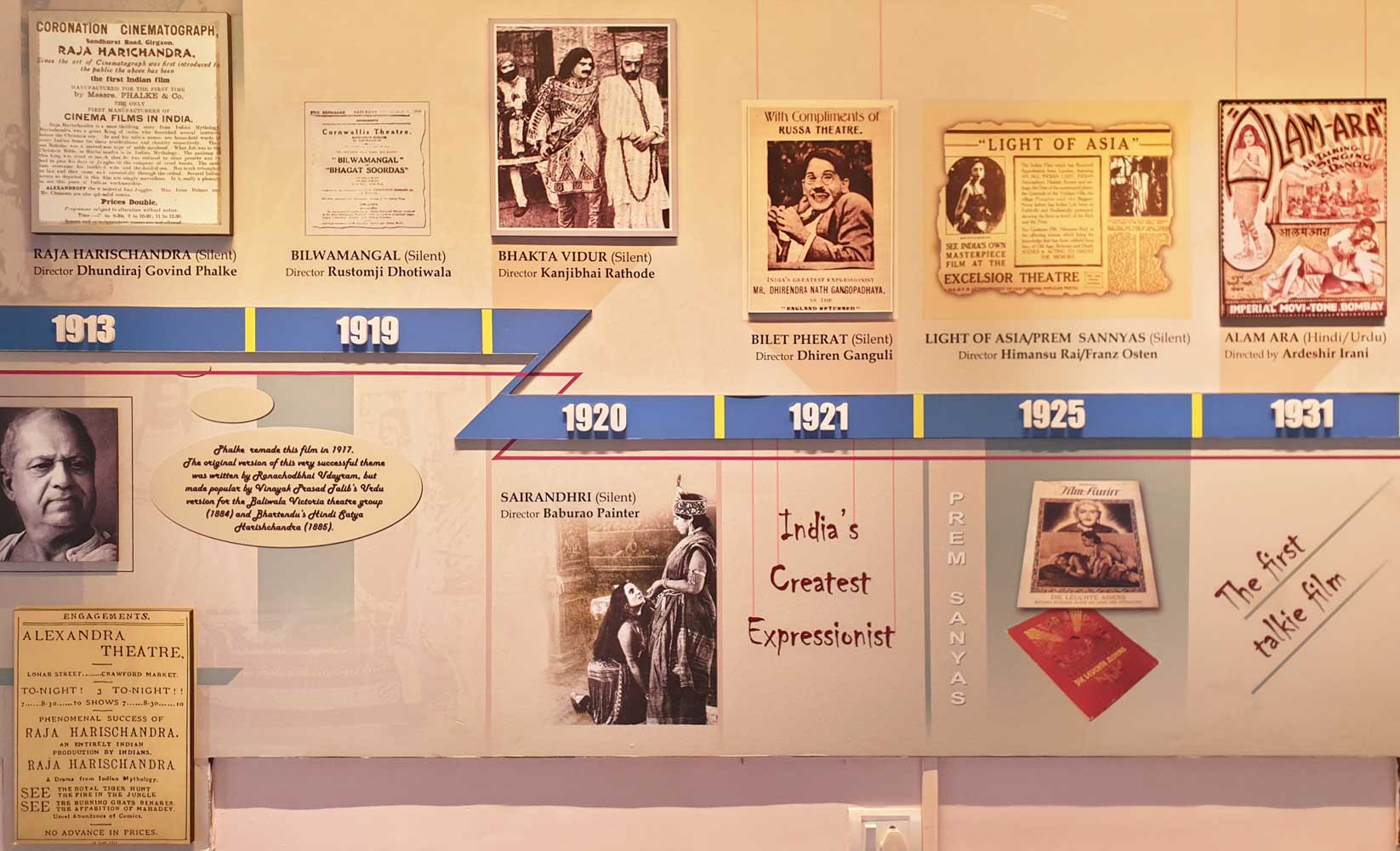
Section
of timeline for Indian cinema
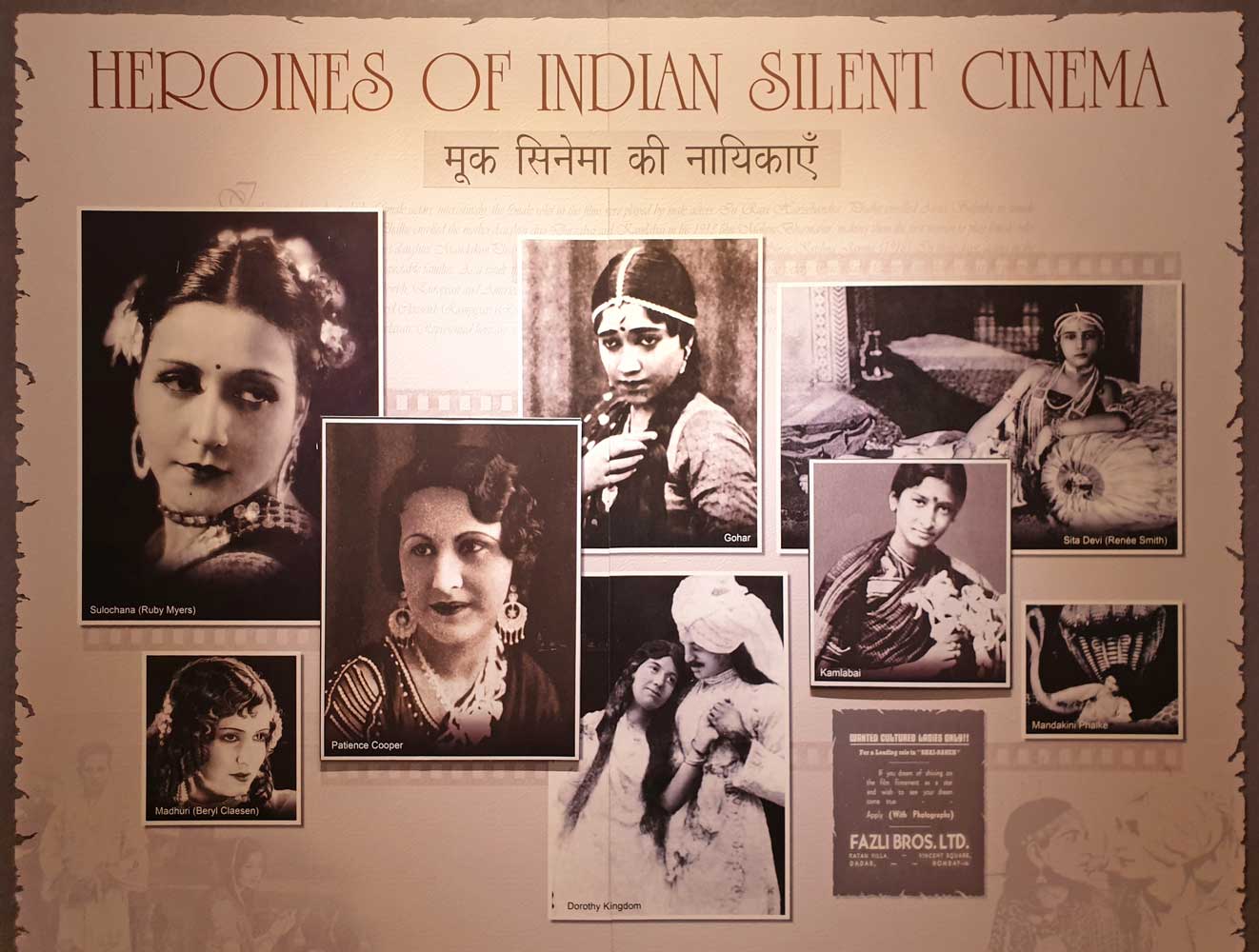
In the
earliest days of Indian cinema men played the roles of women, but that didn’t
last long!
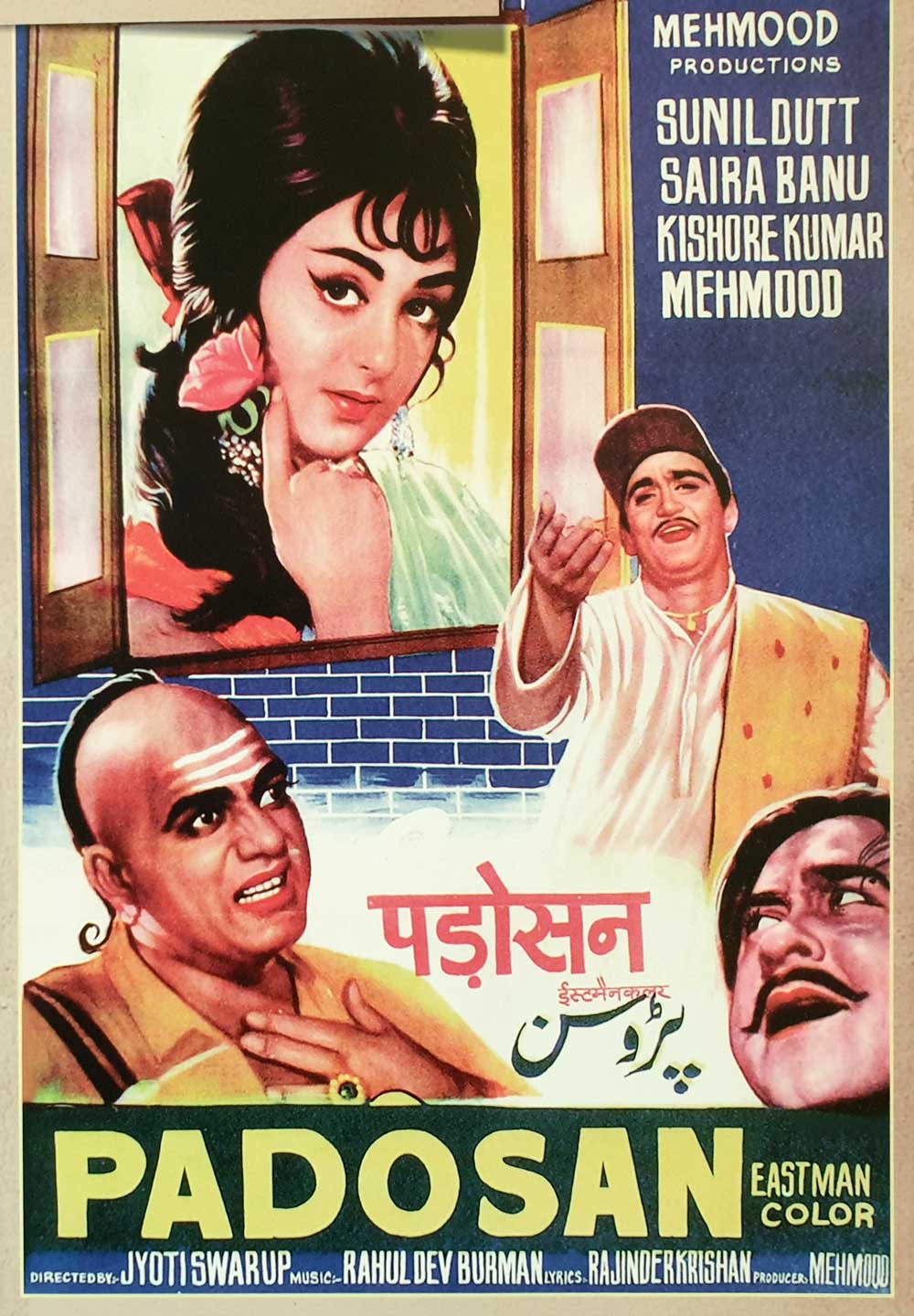
Indians
love ‘masala’ films that have it all—music, dance, romance, action, comedy, and
much much more!

One of
many old cameras on display, this Seiki 35mm (Japan, 1951) saw use in both
indoor and outdoor sets.
Next I continued to four floors of exhibits in the towering metal and glass
New Museum Building and learned how India developed into the largest film
producing country in the world. One floor shows the equipment used—cameras,
lights, sound gear, and post-production editing machines. Videos explain how
one could get into making movies. The final exhibit area tells of Mahatma Gandhi,
who despised cinema for its corrupting influence, yet the cinema loved Gandhi,
whose philosophy and practice influenced film makers. I wandered through the
museum more than four hours! Curiously only cell phone photography is permitted.
The website mentions a 4 p.m. film showing, but the projector wasn’t working
when I visited.
I walked north from the museum and angled northwest to
Mahalaxmi Temple, a popular temple beside the sea. Flower and coconut offerings,
sweets, and religious souvenirs line the small road that leads to the temple
entrance, where I parked my shoes and followed the men’s line to see the shiny
brass images sheltered under a silver shrine. I continued around back to small
shrines to Ganesh, Hanuman, and Shiva, then hazy views across the sea. Lastly I walked back to my room with stops for a tomato uttapam followed by a
slice of chocolate cake.

Lots of glitter in the shops near the temple!

All the religious supplies you need.
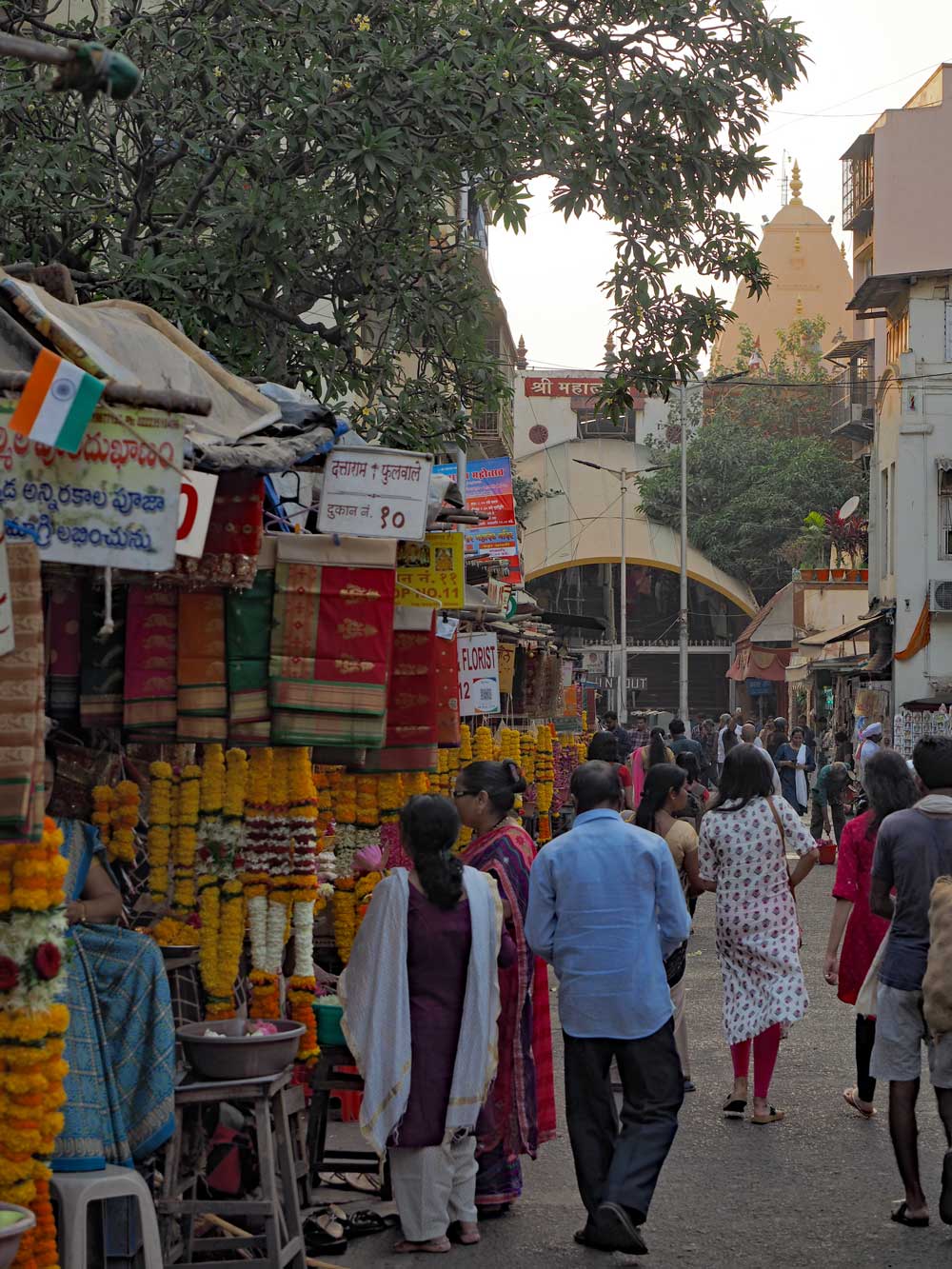
Temple entrance is straight ahead. The sanctum lies under the tower on the
right.
12 February Mumbai
After the usual breakfast of an idly and vada plate,
toast-butter-jam, and milk tea at Maji Sagar, I caught a taxi south to Mumbai’s
biggest museum, the Chhatrapati Shivaji Maharaj Vastu Sangrahalaya
www.csmvs.in (open daily 10:15 a.m.-6 p.m.).
Naturally most people prefer the old name, Prince of Wales Museum, for which the
prince laid the cornerstone in 1905. Although completed in 1914, the military
commandeered the building as a hospital for WW I troops, and only in 1922 did
the grand building with its Indo-Saracenic splendor inaugurate as a museum.
Foreigner’s admission is a stiff Rp. 650 and I had to pay Rp. 100 for a camera
permit, but the audio guide was free with a Rp. 1,000 deposit. I started in the
central gallery, graced by the marble ‘La Source’ fountain specially
commissioned for the museum and based on a 19th-century painting of the same
name by French artist Jean Auguste Dominique Ingres. From here I turned into the Sculpture Gallery, filled with
ancient Hindu, Buddhist, and Jain stone figures. The small Pre & Proto History
Gallery displayed jewelry, figurines, ceramics, and building materials from the
ancient Indus Valley civilizations.
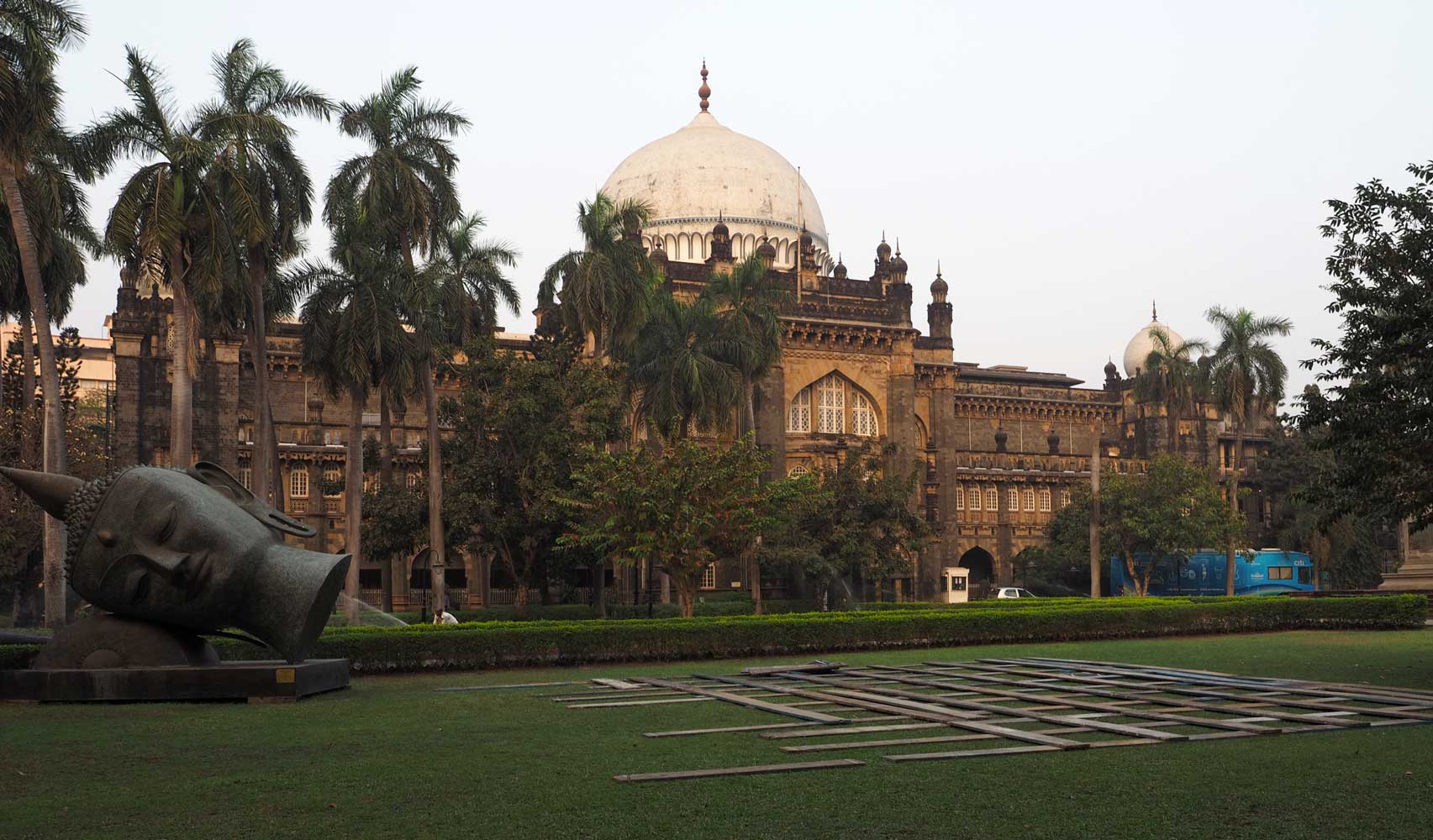
Chhatrapati Shivaji Maharaj Vastu Sangrahalaya or Prince of Wales Museum has
impressive Indo-Saracenic architecture. On the left you can see the giant copper
sculpture The Buddhas Within (2016) by Satish Gupta.

Behind The Buddhas Within, you can see 1,500 micro Akshobhya
Buddhas: 500 for the past, 500 for the present, and 500 for the future.
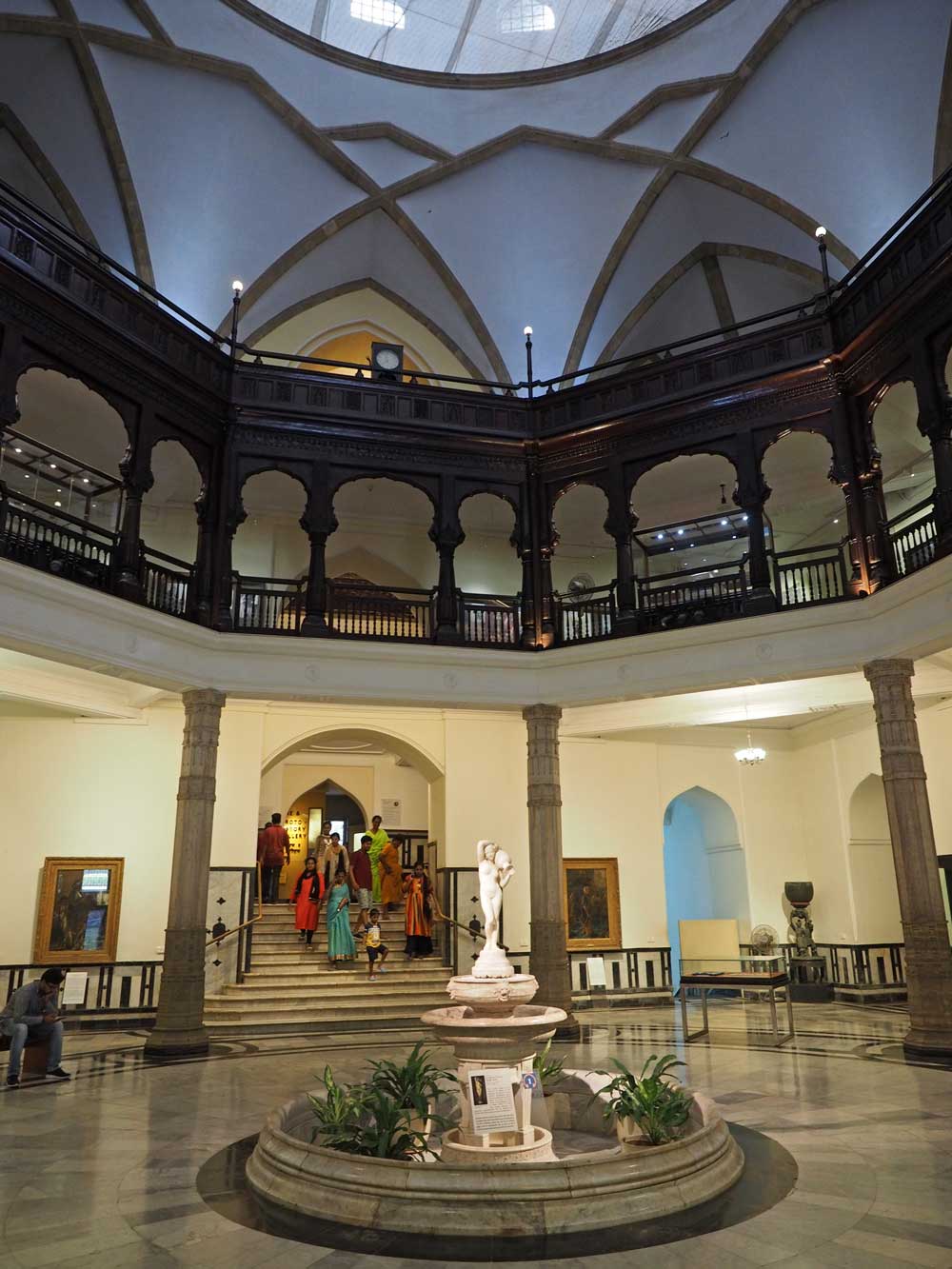
Central lobby under the grand dome

Uma Mahashvaramurti (Shiva and Parvati), a pink sandstone ceiling slab from
Huchchappayyagudi Temple (7th C) in Aihole, Karnataka
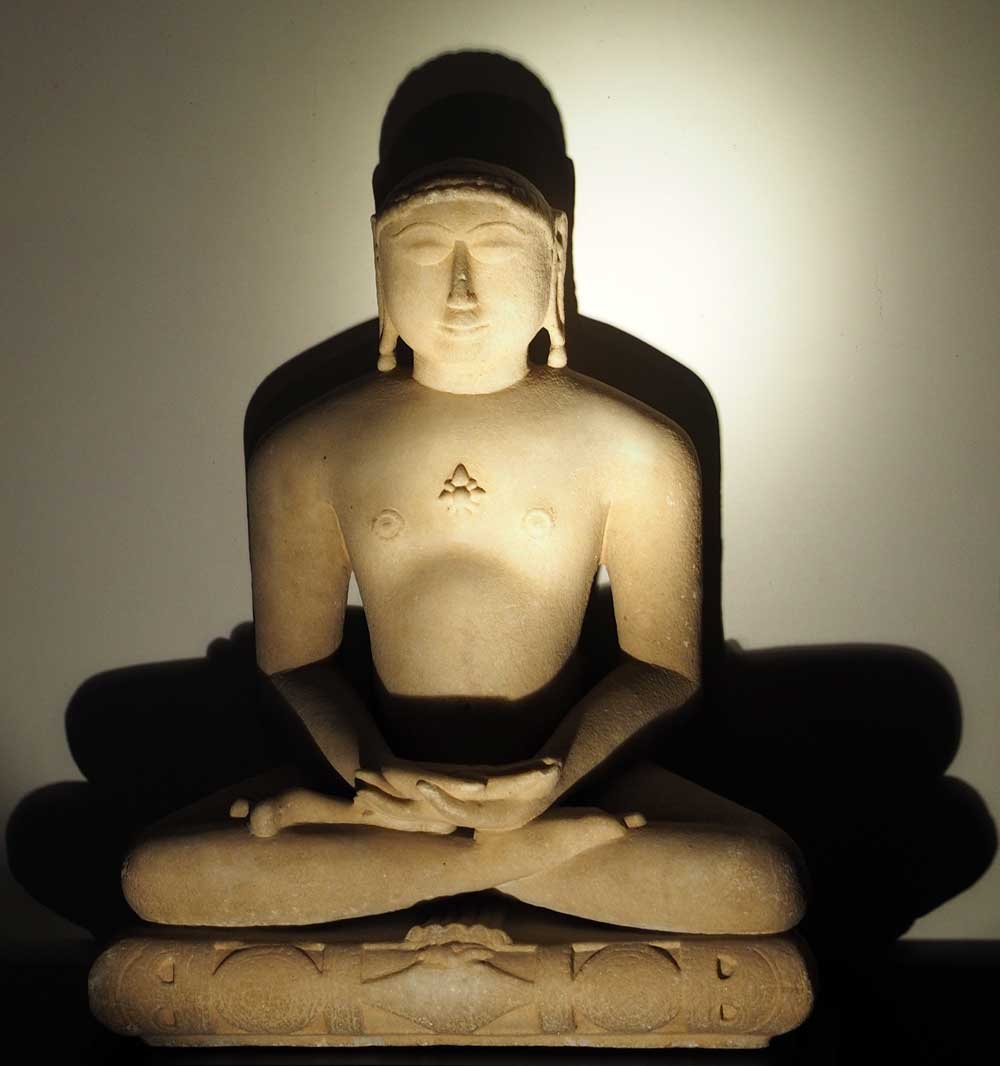
Jaina Tirthankara (Late Medieval; marble) from Gujarat
For something different I wandered over to the East Wing Extension Building and toured the natural history galleries, a bit dusty but worthwhile for close-up views of birds, big cats, marine creatures, and other wildlife. Upstairs in this building I enjoyed the collection of South Asian sculptures and miniature paintings in the Karl and Meherbai Khandalavala Gallery. Nearby a special exhibition Icons of Faith showed Indo-Portuguese statues from churches in Old Goa. Back in the main building I walked past delightful colored engravings of Calcutta in the Prints Gallery. The Himalayan Art Gallery hosts many strange bronze statues with helpful labels to make some sense of their functions in Tantric Buddhism.
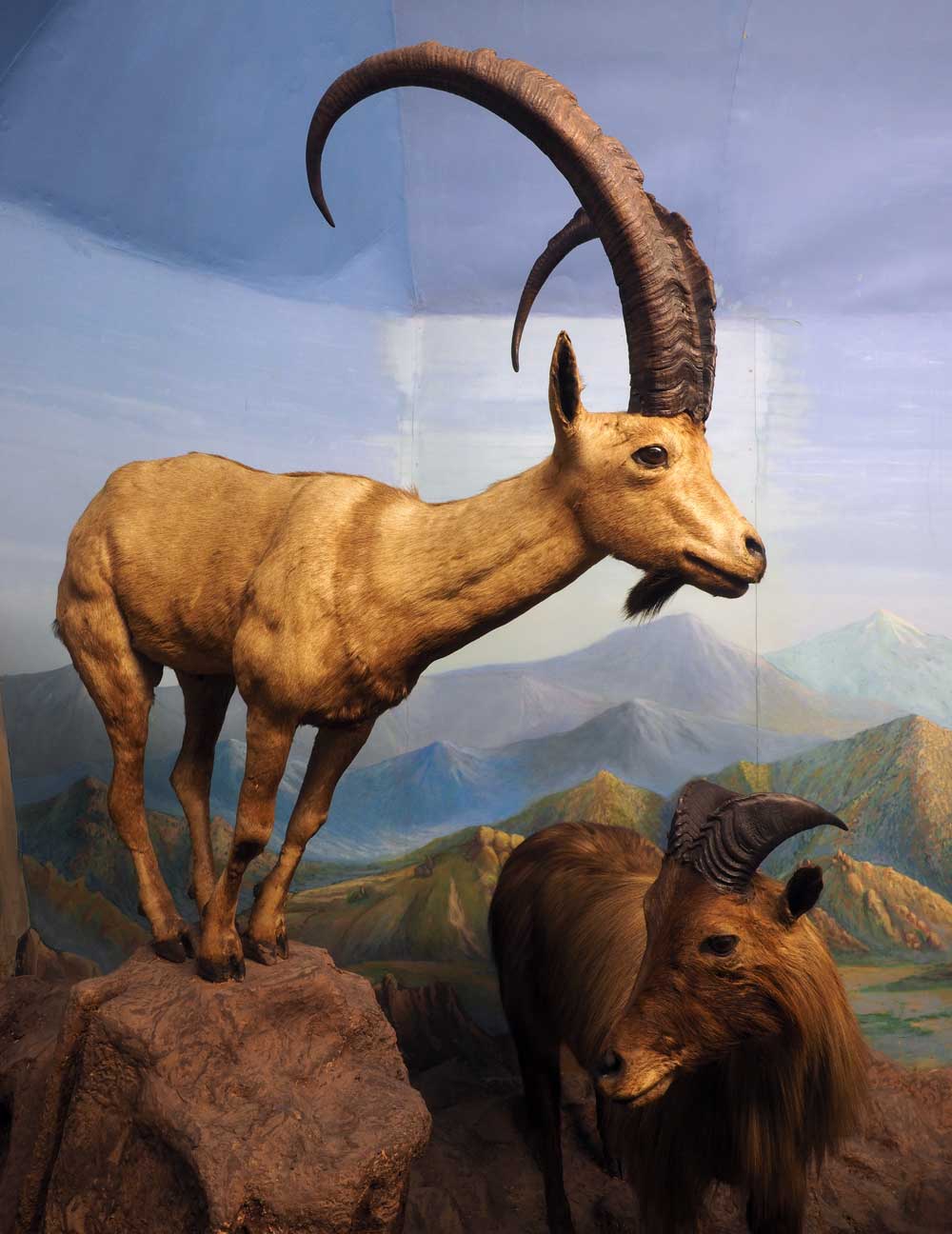
Sind wild goat (Capra hircus blythi) stands above a Himalayan tahr
(Hemitragus jemlahicus) in the Wild Goats and Sheep Exhibit.

Ladies enjoying themselves on a terrace (1707-20; Mughal)
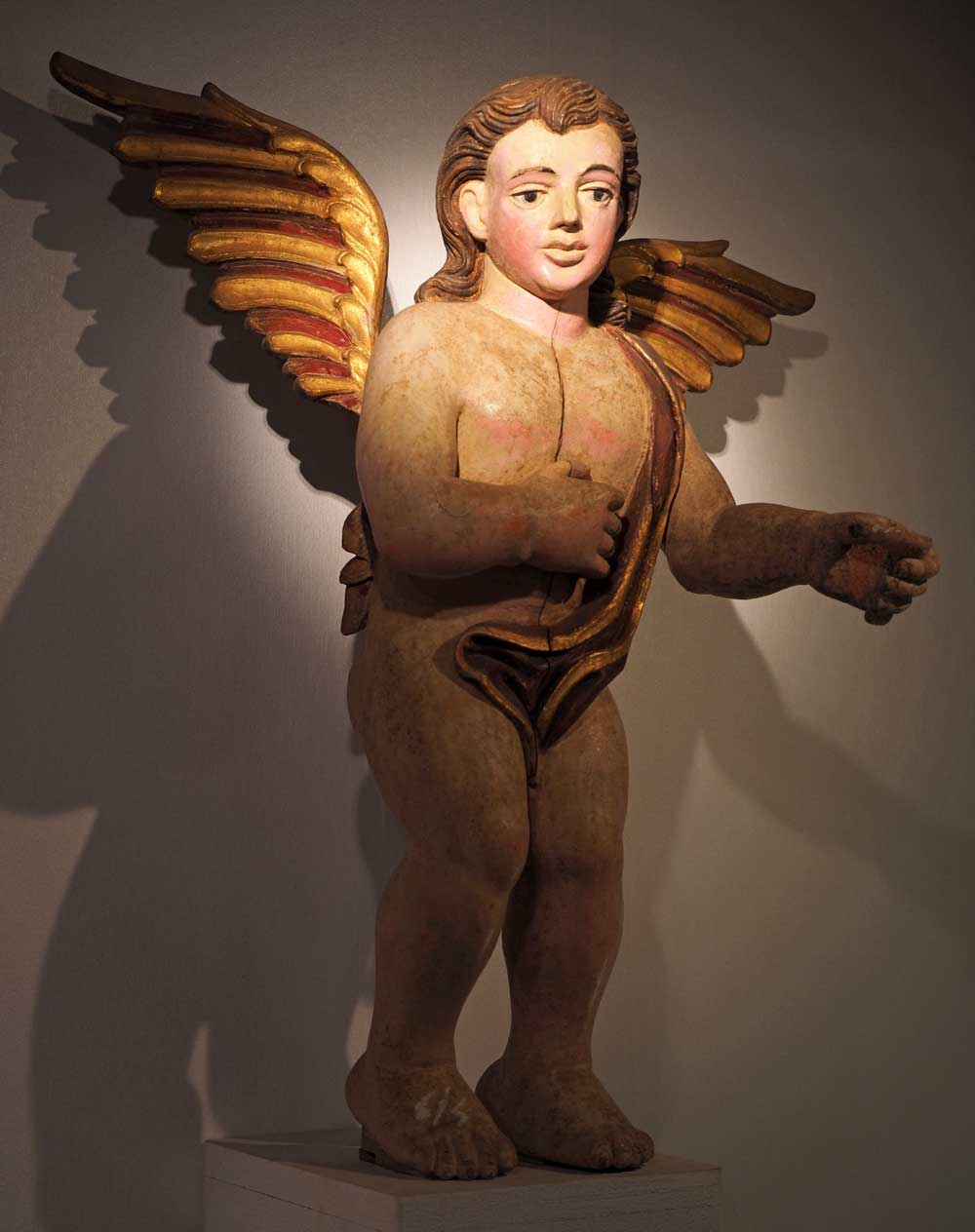
Angel (19th C; polychrome wood) from Goa in the Icons of Faith, an
exhibition on Indo-Portuguese Christian art
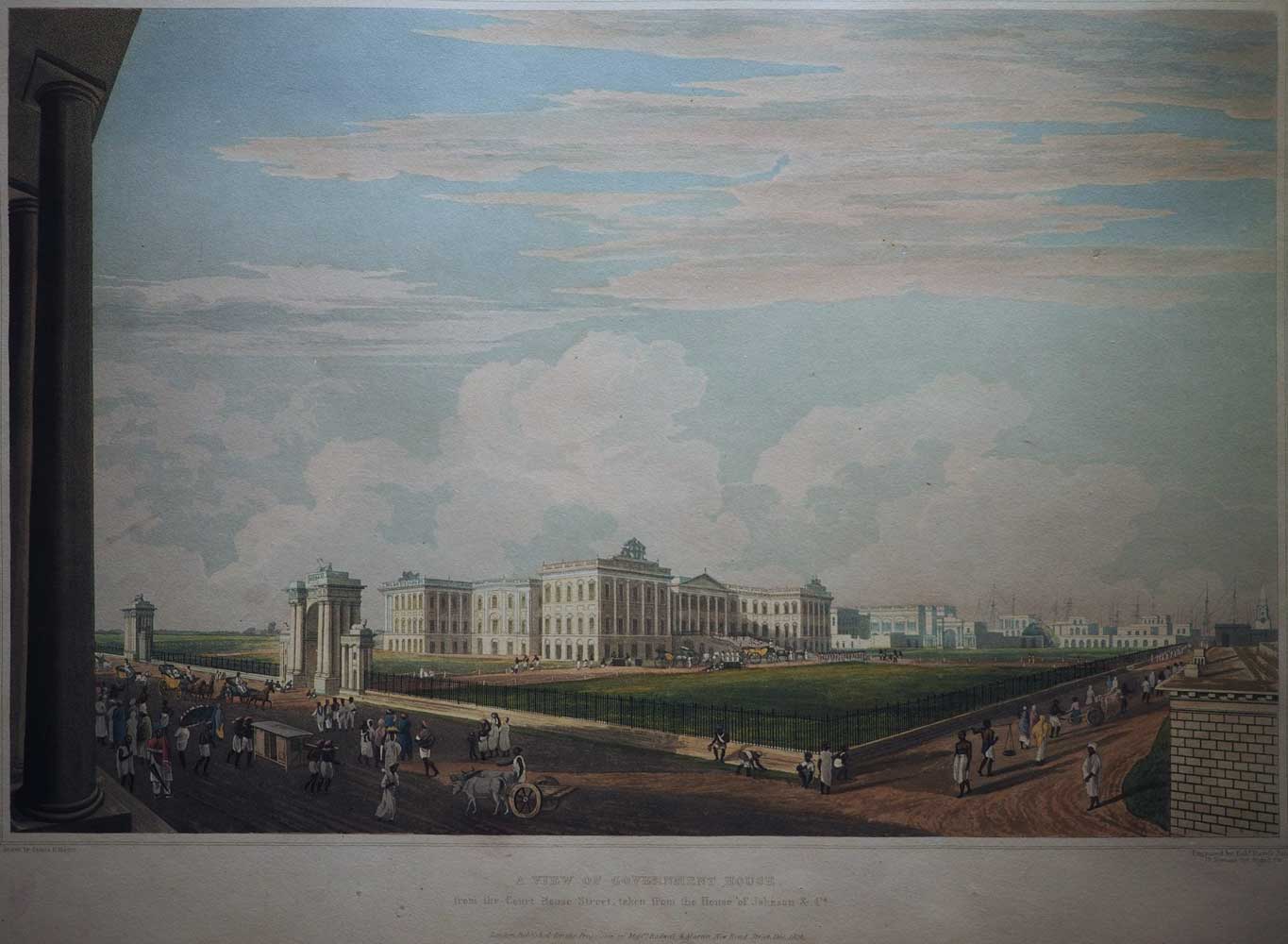
A View of Government House by James Braille Fraser (1783-1856) and published
in London in 1824
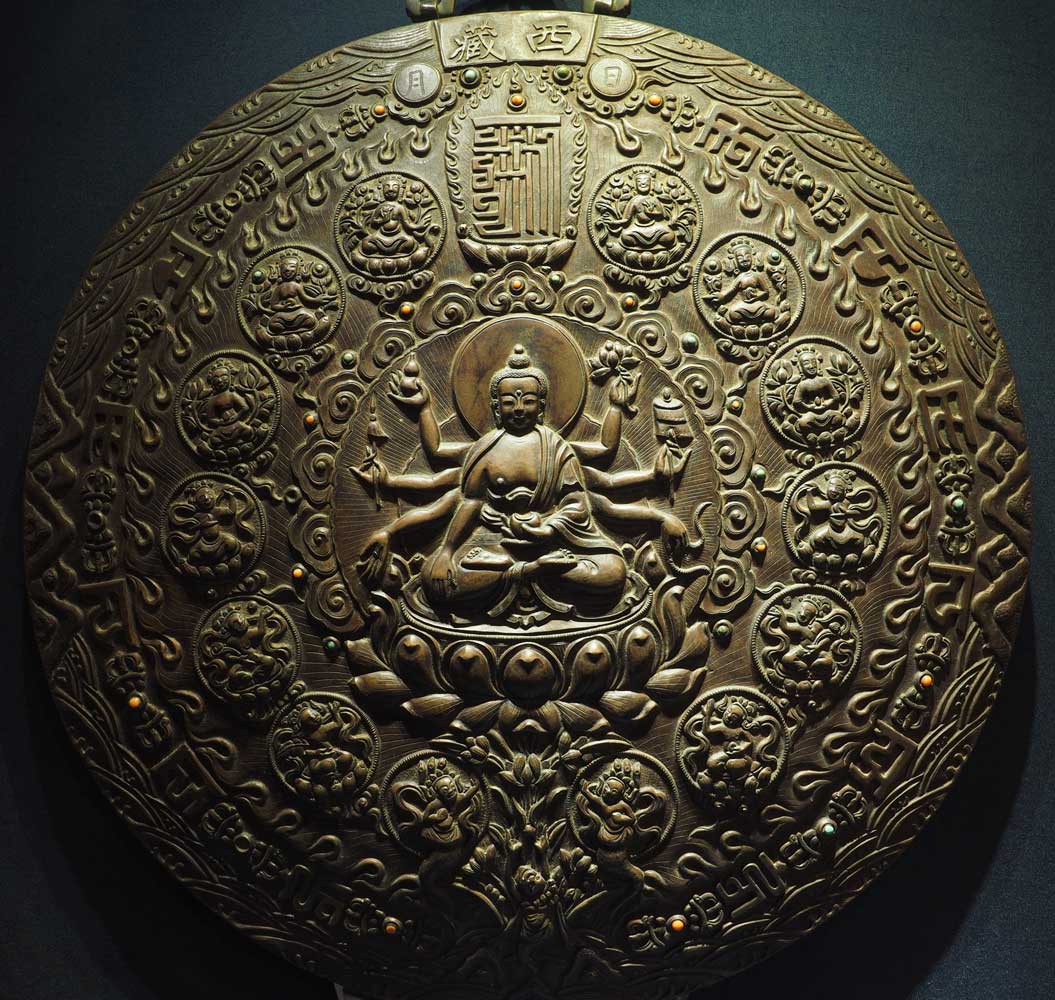
Mandala of Akshobhya (c. 19th C; bronze) in a Sino-Tibetan style
The
figure of Akshobhya, who appears in the center, is one of the Five Wisdom
Buddhas.

Human-bone apron from Tibet (18th-19th C)
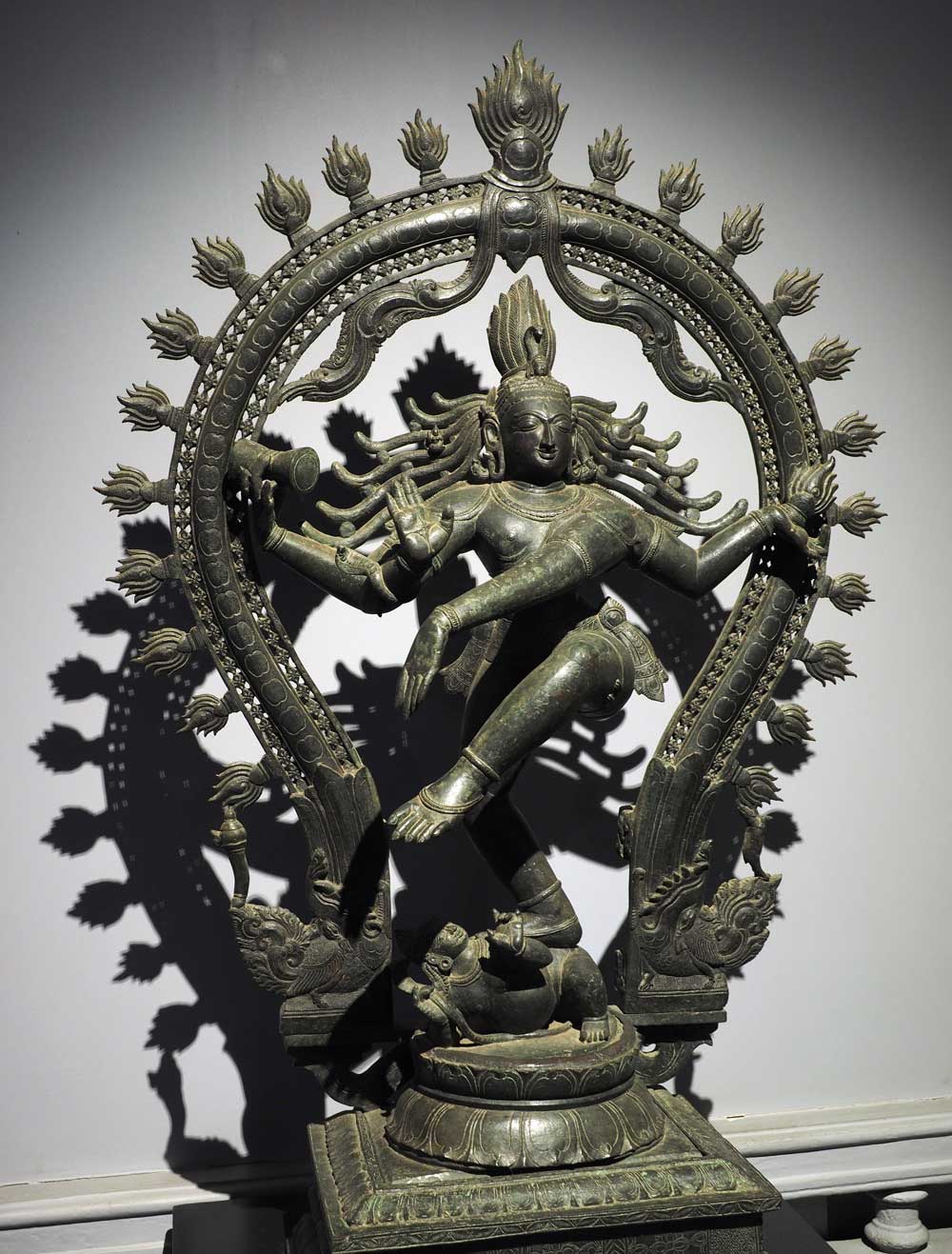
Nataraja—Shiva as Lord of the Dance—from South India (18th C bronze)
Across the rotunda, the Miniature Painting Gallery offers extremely detailed and
colored works from past centuries, while the adjacent Krishna Gallery displays
lovely contemporary miniature paintings. The top floor held less interest for
me, but I did find memorable works in the Textiles & Costumes Gallery, the
European Painting Gallery (There’s an Abraham Lincoln!), Chinese & Japanese
Gallery (mostly poorly labeled ceramics), and a contemporary art show. By
closing time I had wandered the halls for more than six hours and seen just
about everything that I wished to see.
The Lonely Planet guidebook
mentioned Gujerati thalis—my absolute favorite, but tough to find outside
Gujarat—at Samrat Restaurant. So I walked over to it, two short blocks west of
Oval Maidan, and had a wonderful and super-filling dinner. The taxi back to my
room went via Marine Drive that follows the great curve of Back Bay, very pretty
at night.
13 February Mumbai
Experiencing a sore throat today, I
decided to stay in and write a pile of postcards, something I’ve gotten out of
the habit of doing. For dinner I went around the corner to an upscale Bengali
restaurant, Oh! Calcutta, and had one of the tasty vegetarian offerings:
koraishutir dhokar dalna (green pea and lentil cakes in a curry sauce) along
with pulao rice.
14 February Mumbai
In the morning had the usual
breakfast at Maji Sagar, did some shopping for medicines (very cheap in India!),
and got a haircut (also low priced). A taxi brought me to the National Museum of
Modern Art, whose large collection on five floors covers Indian art from 1857 to
the present, but it was closed today, something not mentioned on its website nor
signed at the entrance. Instead I got my art fix first at nearby Jehangir
Gallery www.jehangirartgallery.com
which I had visited five days ago. All five exhibition spaces now had new
exhibits—two large group shows of paintings and sculpture, two solo shows with
paintings, and one solo show with landscape photography. The artwork had lots of
variety and I enjoyed seeing it. Next door I stepped into Gallery MMB of the
Goethe-Institut to see an exhibition about women designers and architects along
with a photo exhibit by a fellow who has tried to find every outdoor clock in
Mumbai and a textile exhibit. DAG, Delhi Art Gallery
www.dagworld.com presented “The Sixties
Show” across three floors with works of Indian Modernism made in the 1960s. Most
of the big names in 20th-century Indian art were represented with the paintings
and a few sculptures. Like most of the world, India underwent many challenges
and changes during the turbulent decade.
In the late afternoon I walked
over to Samrat Restaurant with the idea of getting another Gujarati thali, but a
reviewer on Google led me astray; the thalis are only served noon-4 p.m. for
lunch and 7-11 p.m. for dinner. I drowned my sorrows in a cup of tea with a
little chocolate-almond pie at the bakery in front of Samrat.
A short
taxi ride through heavy traffic brought me to Victoria Terminus, the famed
architectural wonder renamed in 1996 to an unwieldy “Chhatrapati Shivaji Maharaj
Terminus” after a Maratha warrior king (1630-80). Most people use the old name
or the initials CSMT. Work began in 1878 and took ten years to create this
immense Indo-Saracenic Victorian Gothic Revival building that serves 18
platforms with trains to local destinations and many corners of India. The stone
turrets, gargoyles, rose windows, arches, and other decorative work seem more
suited for a cathedral or temple than a train station. I caught the façade
glowing in the last sunshine of the day, then went inside to admire the vaulted
ceilings, stonework, and ironwork. It seemed half of the city had entered the
vast building to catch a train ride home, and I had to be careful not to get in
the way of the crowd and get trampled. When I returned outside, colored lights
on the façade had switched on as night fell. Nearby across a busy road, the
Municipal Corporation of Greater Mumbai had a complementary architectural style.
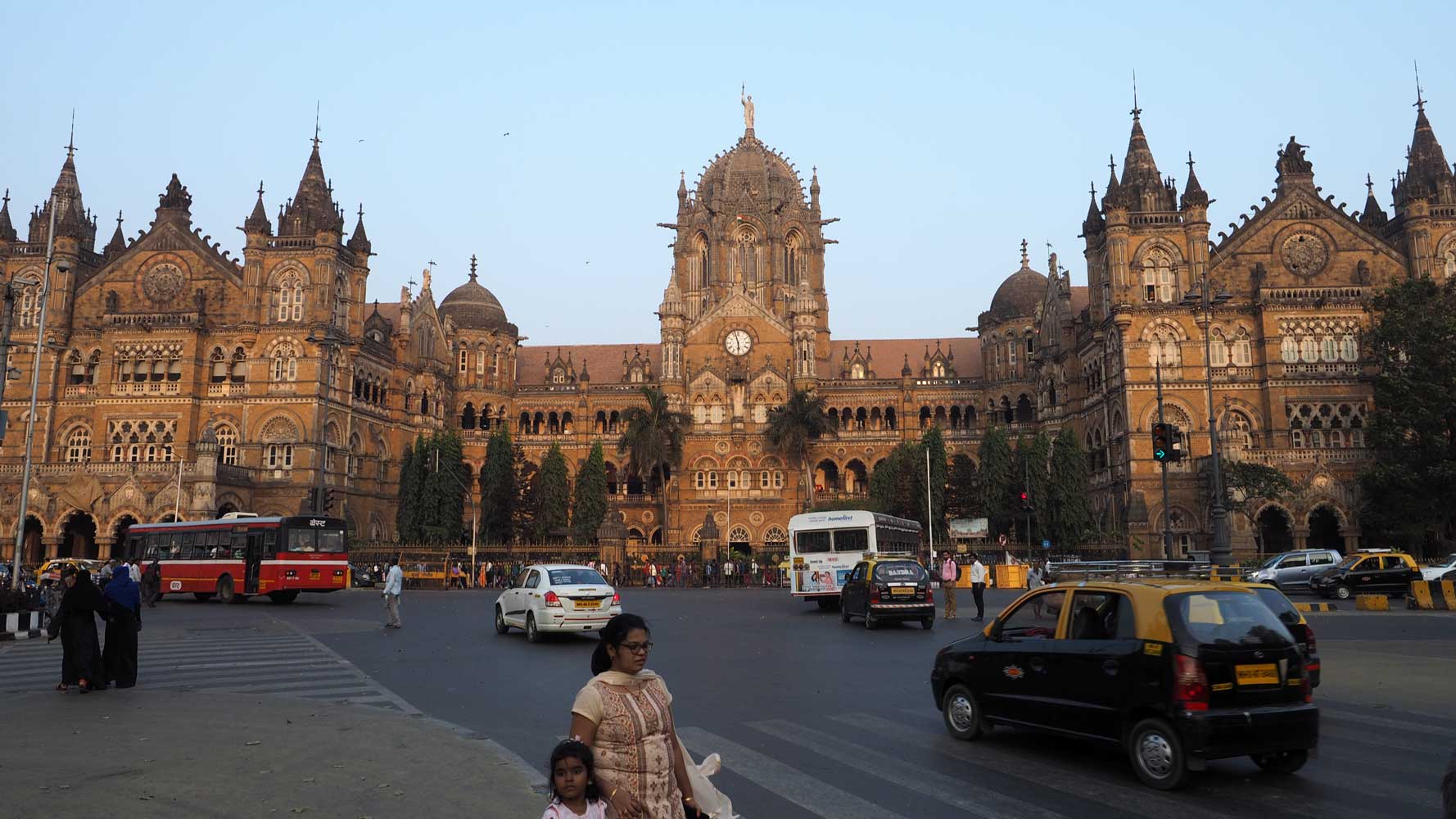
Road traffic swirls in front of Victoria Terminus.
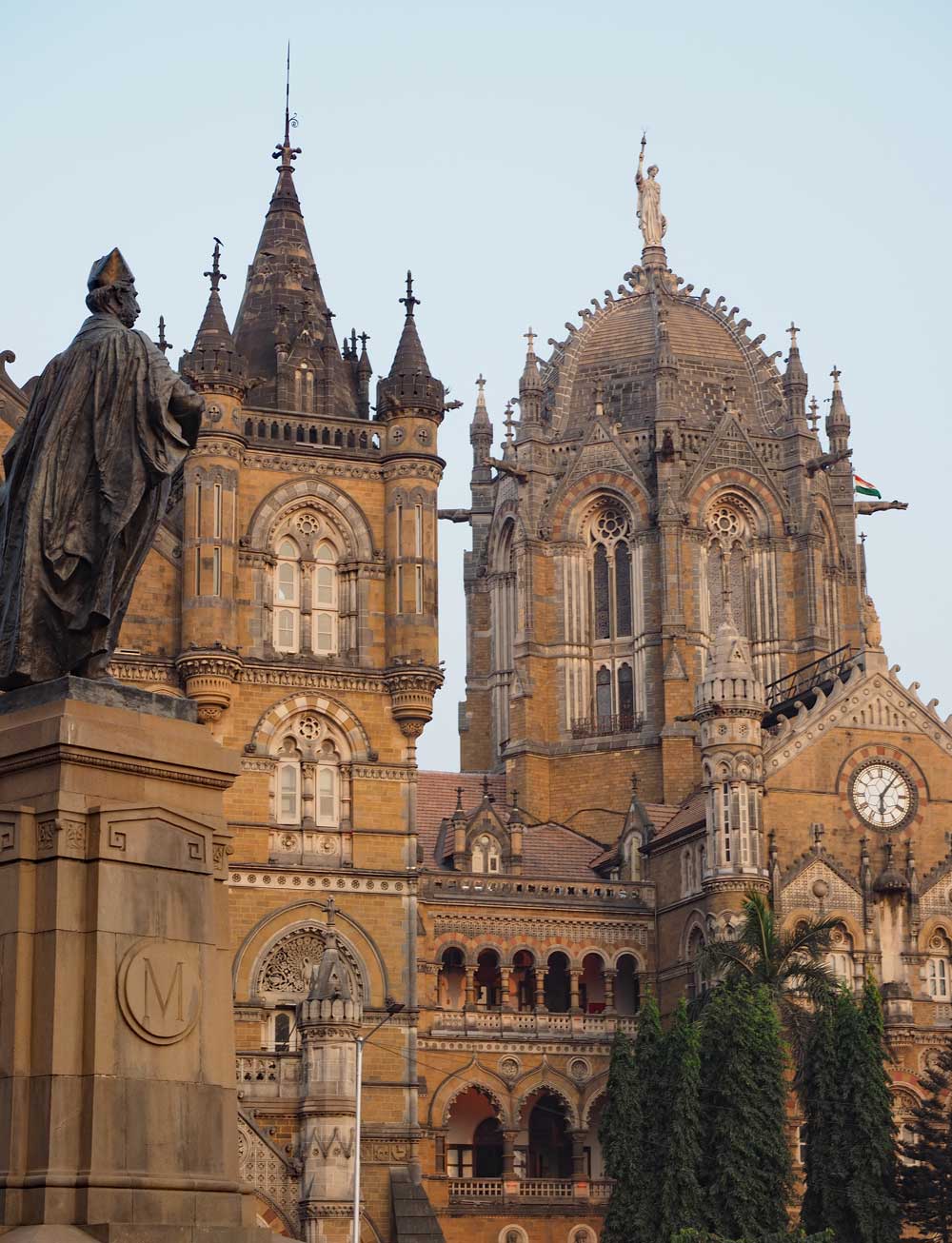
Victoria Terminus detail

People rush to reach their trains on platforms to the left.
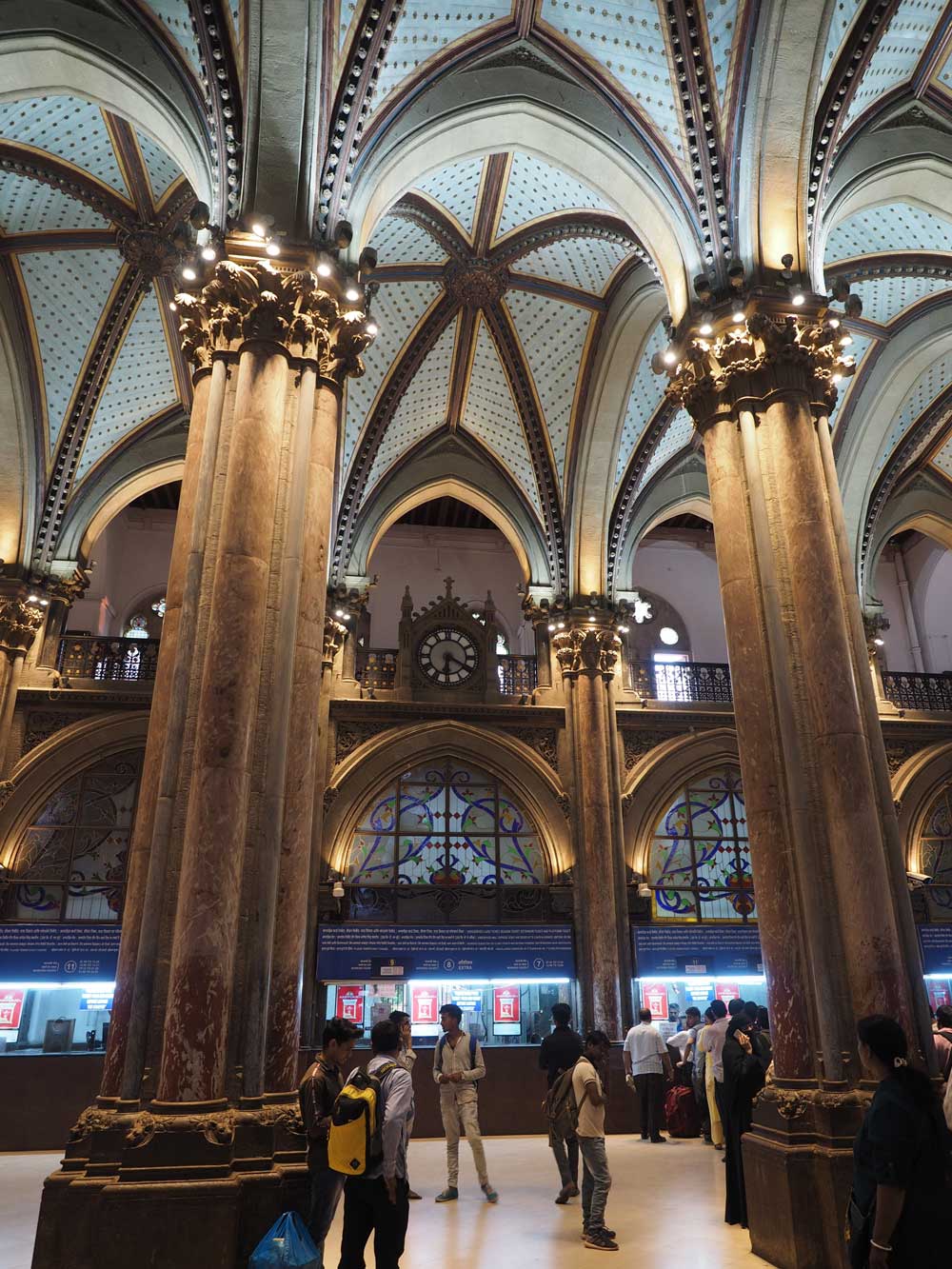
The ticket office hall has lovely vaulted ceilings.

Colored lights come on at night.
When I checked the Uber taxi app, prices back to my room were very high, so
I asked a regular taxi driver and got a much lower price. So far I’ve found that
Uber taxis have nice air-conditioned cars while most regular taxis tend to look
beat-up and lack a/c. In a sentimental way I miss the old taxis with their 1950s
styling, the Hindustan Ambassador (in produc tion 1958-2014 with very few
changes) and Premier Padmini (produced from 1964 to 2000), but these have gone
nearly extinct in recent years. Generic-looking cars of Korean or Japanese
designs have replaced them, no doubt with greater fuel efficiency and lower
emissions.
15 February Mumbai
I had written 39 postcards over
the past two days, so now the challenge lay in mailing them! Although there was
a post office just three hundred meters away, the one window that sold stamps
only had four-rupee stamps, so I had to paste as many as seven stamps per card.
That’s life in India! I took it easy the rest of the day, then went out for a
Punjabi thali for a taste of North Indian food. At 9:30 p.m. I said goodbye to
my Airbnb hosts, then got an Uber for a ride north to the airport, traveling via
the Bandra Worli Sea Link, a toll road that swings out to sea and crosses the
mouth of Mahim Bay. Tonight I will be flying from Mumbai’s beautiful and
spacious international terminal to Singapore on IndiGo Airlines Flight 6E 19.
Amazingly the check-in counter had no line, though I later had plenty of waiting
for the thorough security check and immigration.
On to Singapore—Part 1: Gardens By the Bay
Back to beginning of “Backpacking 2020: India, Singapore, and Philippines”